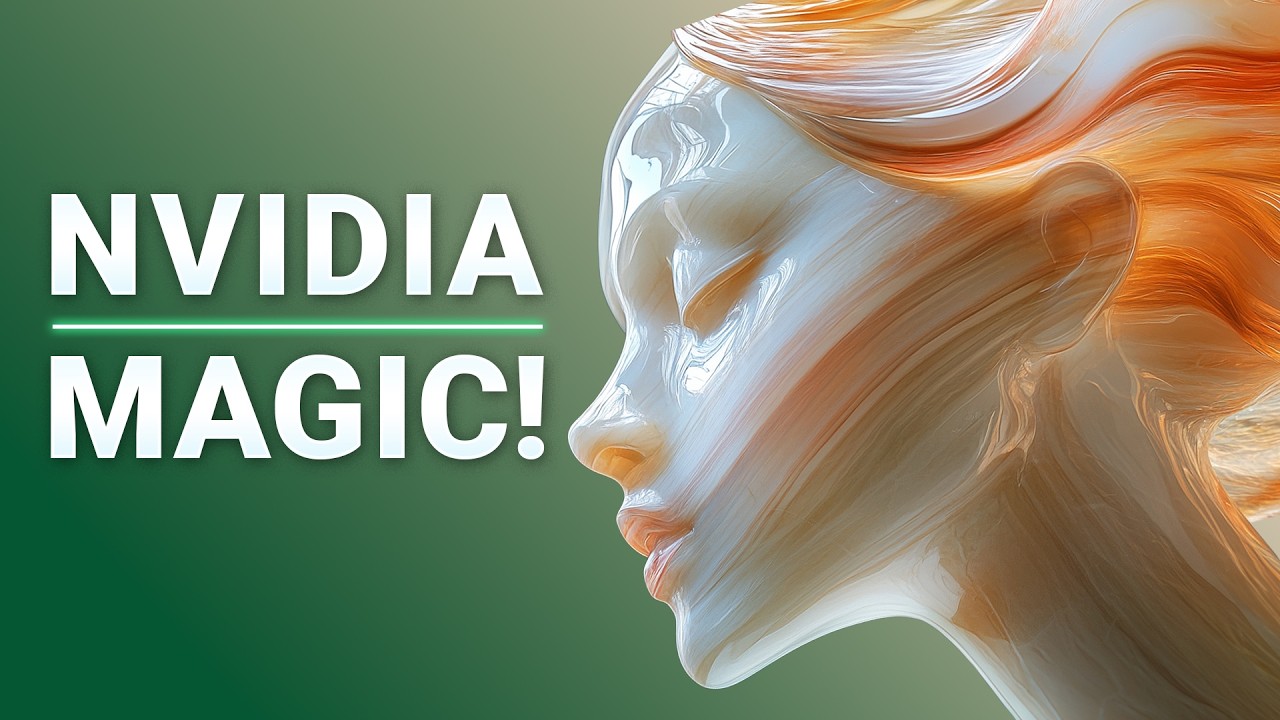The video highlights NVIDIA’s advancements in AI technology, particularly its new text-to-3D generation capabilities, which allow for the creation of intricate 3D models from text prompts, showcasing unprecedented quality and creativity. The presenter discusses the AI’s ability to generate multiple textures and its hierarchical processing structure, while also acknowledging its limitations with complex prompts, ultimately emphasizing the exciting potential for future applications in various fields.
The video discusses the advancements in AI technology, particularly focusing on the new capabilities of text-to-3D generation. It highlights how AI can now create not only images and videos from text prompts but also intricate 3D models suitable for various applications, including video games and animated films. The presenter, Dr. Károly Zsolnai-Fehér, emphasizes that while previous methods laid the groundwork for these innovations, the latest techniques offer unprecedented quality and creativity in generating 3D objects.
The AI technique showcased in the video has been trained on millions of objects, allowing it to produce new models that surpass earlier methods in quality. The presenter shares examples of generated objects, such as a campfire eagle head and a strawberry, noting that while these may not be high-resolution enough for immediate use in professional projects, they serve as excellent starting points. The ability of the AI to create unique and unexpected designs, like a chair resembling a root, hints at a level of creativity that is exciting for future applications.
One of the standout features of this new AI is its capability to generate multiple textures for the created models. This flexibility allows users to request variations until they find a design that meets their needs. The video also introduces the concept of using LiDAR data from self-driving cars to create realistic 3D environments for training AI in simulated driving scenarios, further bridging the gap between virtual and real-world applications.
The presenter explains the hierarchical structure of the AI’s processing, which operates at three levels of resolution, from coarse to fine. This approach enhances the diffusion process, where the AI starts with a noisy representation and gradually refines it into a detailed 3D model. The use of voxels, akin to Lego pieces, allows for a step-by-step improvement in the geometry of the generated objects, showcasing the potential for even more intricate designs in future iterations.
Despite its impressive capabilities, the AI is not without limitations, particularly when handling complex prompts. The video concludes by inviting viewers to consider the potential uses of this technology and encourages them to share their thoughts in the comments. Overall, the advancements in AI-driven 3D generation represent a significant leap forward, promising exciting possibilities for creativity and innovation in various fields.
![]() Check out Lambda here and sign up for their GPU Cloud: Lambda GPU Cloud | 1-Click Clusters
Check out Lambda here and sign up for their GPU Cloud: Lambda GPU Cloud | 1-Click Clusters
![]() The paper “XCube: Large-Scale 3D Generative Modeling using Sparse Voxel Hierarchies” is available here:
The paper “XCube: Large-Scale 3D Generative Modeling using Sparse Voxel Hierarchies” is available here:
![]() My paper on simulations that look almost like reality is available for free here:
My paper on simulations that look almost like reality is available for free here:
https://rdcu.be/cWPfD
Or this is the orig. Nature Physics link with clickable citations:
https://www.nature.com/articles/s41567-022-01788-5
![]() We would like to thank our generous Patreon supporters who make Two Minute Papers possible:
We would like to thank our generous Patreon supporters who make Two Minute Papers possible:
Alex Balfanz, Alex Haro, B Shang, Benji Rabhan, Gaston Ingaramo, Gordon Child, John Le, Kyle Davis, Loyal Alchemist, Lukas Biewald, Martin, Michael Albrecht, Michael Tedder, Owen Skarpness, Richard Sundvall, Taras Bobrovytsky, Ted Johnson, Thomas Krcmar, Tybie Fitzhugh, Ueli Gallizzi.
If you wish to appear here or pick up other perks, click here: https://www.patreon.com/TwoMinutePapers
My research: Károly Zsolnai-Fehér – Research Scientist – Two Minute Papers
X/Twitter: x.com
Thumbnail design: Felícia Zsolnai-Fehér - http://felicia.hu
